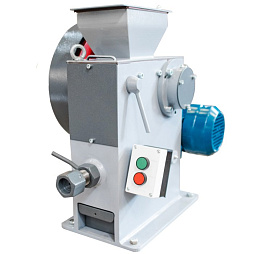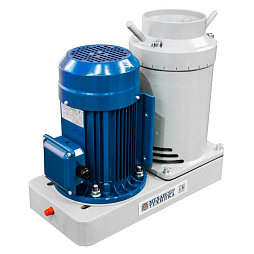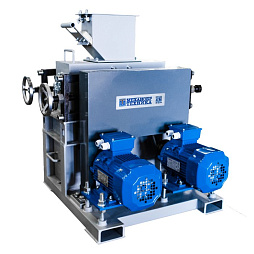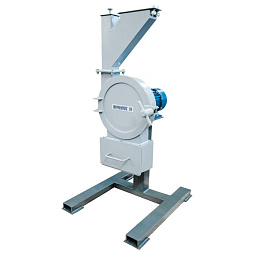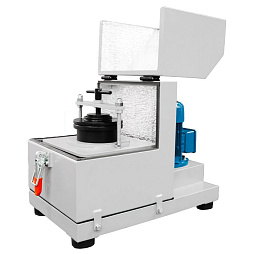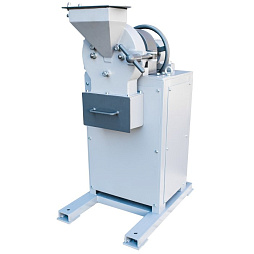Назад
Crushing and grinding
Crushing or disintegration is a process of mechanical destruction of solid raw material. The construction materials, chemical raw materials, solid minerals, abrasive materials, some kinds of plant raw materials, solid secondary raw materials are subject to crushing.
The peculiarities of the jaw and cone crushers are their rather limited capacities in splitting the crushed material size. Usually, the splitting ratio does not exceed 4-5. That is why the ore preparation schemes use three or four crushing stages in strict sequence.
For purchasing of the equipment you are interested in or for more detailed information, please contact us by phone +7 (812) 331-02-42.
REC Mekhanobr Tekhnika reserves the right to change the equipment specifications.
First crushing equipment
The first industrial rock crushing machines were created in the late 18th century when the English engineer, Black, invented the so called jaw crusher. The crusher applied the crushing force for the pieces of hard construction raw material, for example, granite, between the immovable liner plate and mobile plate making oscillating movements. The jaw crusher had ingeniously simple and reliable design so that similar machines have been manufactured for mining companies in large quantities already. Of course, the driver of the first jaw crushers was the steam engine but not the electric motor like today. The crushers can be of different typical size - from laboratory to industrial ones for large raw materials crushing. The largest ones have the feed opening (“mouth”) of 2.1*2.5 m and are capable of taking the ore up to 1.5-1.7 m.Development of crushing equipment in the industry
The further development of the crushing equipment was marked by creation of the so called cone crushers where the rock mass is destroyed by the compressive and shear forces between the immovable external cone and internal cone rolling over the inner surface of the external cone. The cone crushers used for coarse crushing have steeper profile of the crushing chamber than that of the cone crushers for medium and fine crushing. The maximum piece the cone coarse crushing can receive is 1.2-1.3 m. In general, the cone crushers have higher efficiency than the jaw ones and provide for better splitting of the crushed materials. The advantage is also the opportunity to work “under rubble” of the ore feed while the jaw crushers need more accurate adjustment of the feed. Both the cone and jaw crushers have rigid kinematics that is determined by the design of eccentric units that ensure the motion trajectory of the crushing elements (jaw, cone). That is why these crushers can automatically and flexible response to changing strength properties of the crushed material.The peculiarities of the jaw and cone crushers are their rather limited capacities in splitting the crushed material size. Usually, the splitting ratio does not exceed 4-5. That is why the ore preparation schemes use three or four crushing stages in strict sequence.
Efficient use of the crushing equipment
The splitting ratio of the ore size per stage is possible due to using the principle of the material crushing primarily by the shear and partially compressive forces. Such crushing principles provide for breaking in the cleavage planes of the mineral aggregates and in their structural microfractures, thus allowing for material splitting by 5-10 times. The units implementing the shear principle during crushing of minerals include the KID series vibrating cone crushers and high-pressure press roll crushers. Such crushers are primarily used for fine crushing. For crushing less hard material than the massive crude ore, for example, for crushing the limestone, plaster-stone, or breaking the solid domestic waste, the rotor crushers are used. The most common type of high-speed rotor crushers are the hammer crushers which crushing elements are the plate-type bars (hammers) made of impact-resistant steel that are freely suspended on the horizontal or vertical shaft. The prerequisite of the hammer crusher operation is precise proportioning of the feed material supply to prevent crusher overloading and emergency stop.For purchasing of the equipment you are interested in or for more detailed information, please contact us by phone +7 (812) 331-02-42.
REC Mekhanobr Tekhnika reserves the right to change the equipment specifications.
Аsk our technician a question

